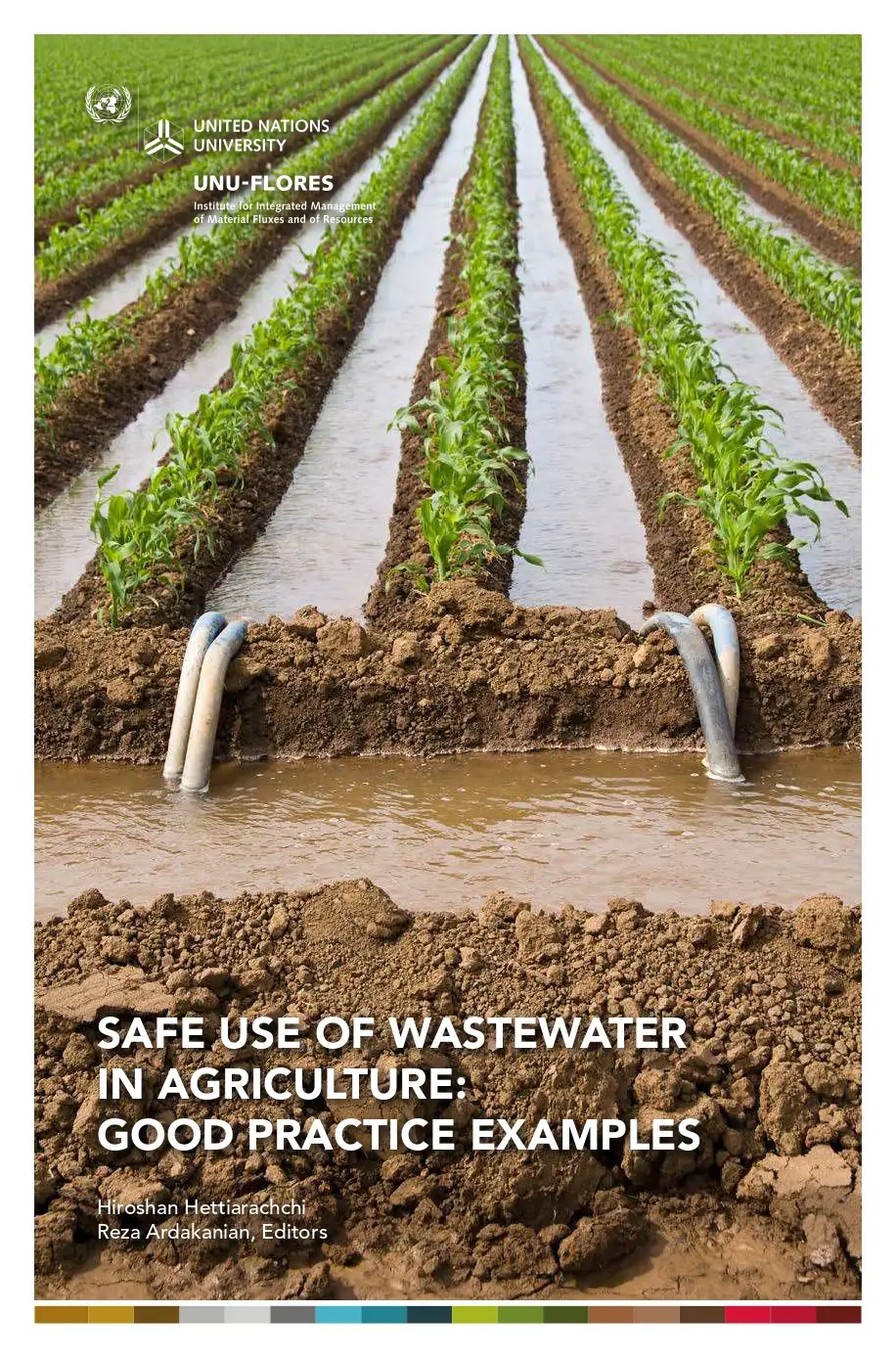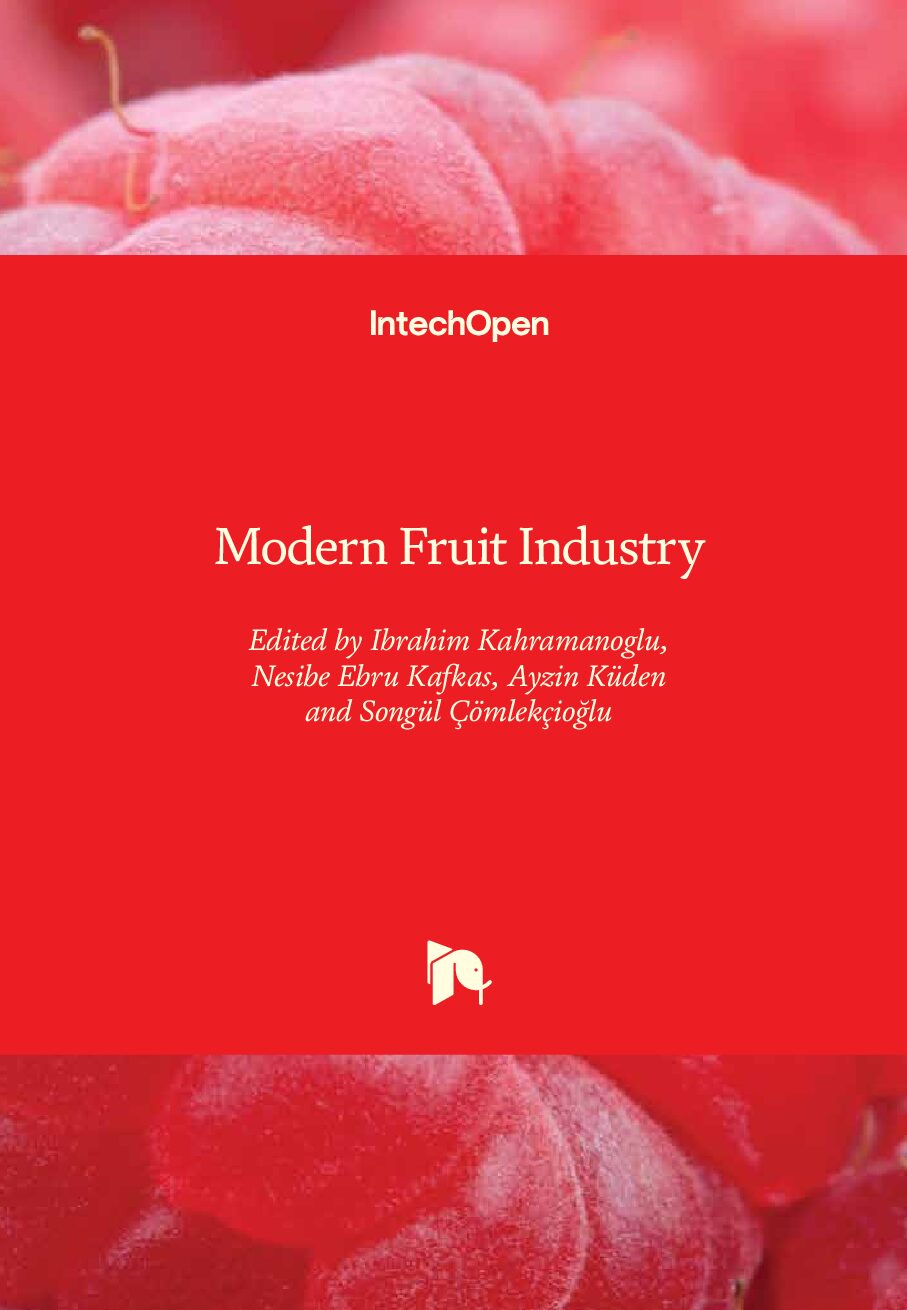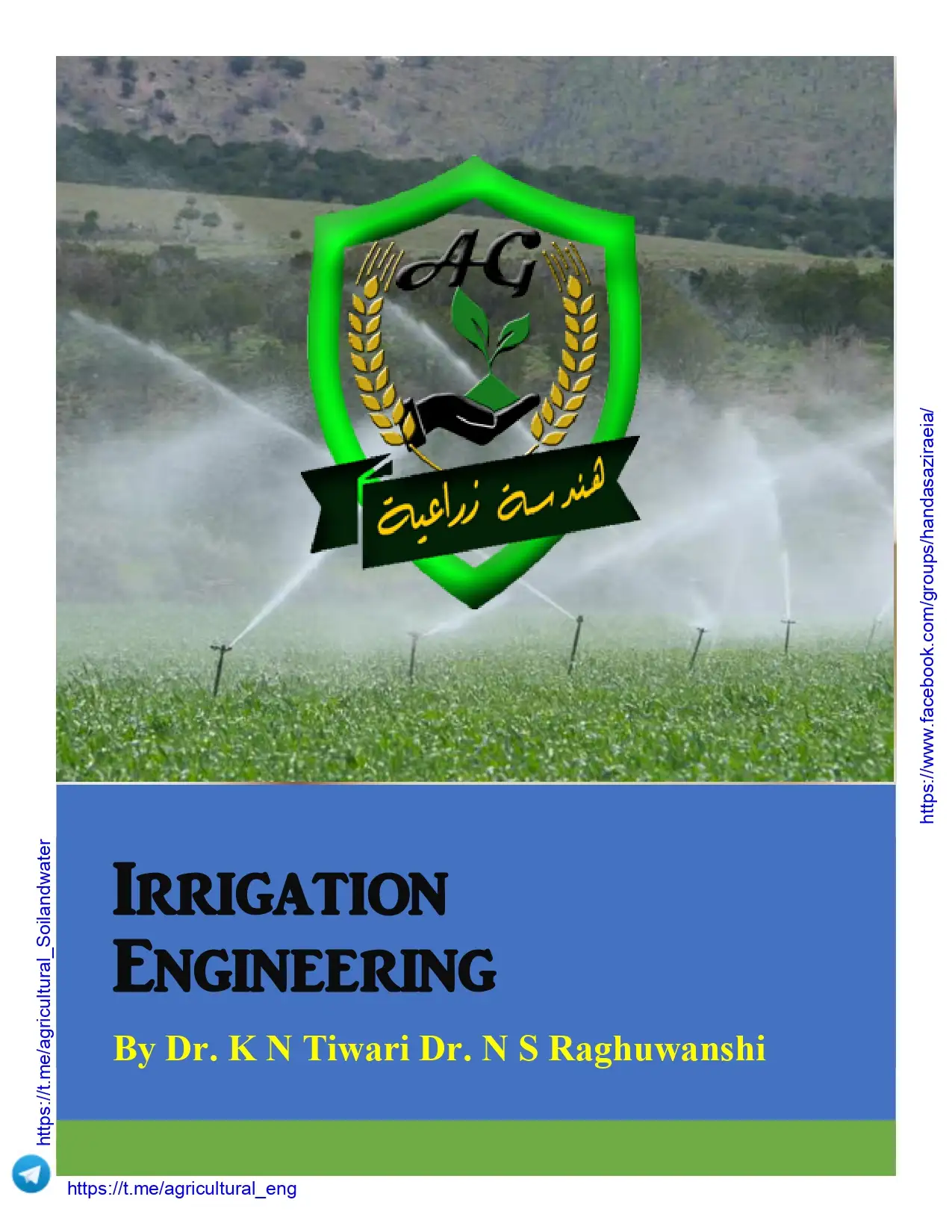Managing the Product Quality of Vegetable Crops under Abiotic Stress
Usually dispatched in 2 to 3 days
Usually dispatched in 2 to 3 days
Category:
Irrigation & Agriculture
Only logged in customers who have purchased this product may leave a review.
Related products
Watering Floodplain Wetlands in the Murray–Darling Basin to Benefit Native Fish A Discussion with Managers
This report describes the content and outcomes of a workshop entitled ‘Watering Floodplain Wetlands of the Murray–Darling Basin for Fish: A Discussion with Managers’ held on 5 March 2008 at Wonga Wetlands in Albury (NSW). The workshop was part of a four-year, National Water Commission funded project aimed at optimizing wetland environmental watering protocols to maximize benefits to native fish populations.
Watering Floodplain Wetlands in the Murray–Darling Basin to Benefit Native Fish A Discussion with Managers
This report describes the content and outcomes of a workshop entitled ‘Watering Floodplain Wetlands of the Murray–Darling Basin for Fish: A Discussion with Managers’ held on 5 March 2008 at Wonga Wetlands in Albury (NSW). The workshop was part of a four-year, National Water Commission funded project aimed at optimizing wetland environmental watering protocols to maximize benefits to native fish populations.
Sustainable Use of Soils and Water: The Role of Environmental Land Use Conflicts
This book on the sustainable use of soils and water addressed a variety of issues related to the utopian desire for environmental sustainability and the deviations from this scene observed in the real world. Competing interests for land are frequently a factor in land degradation, especially where the adopted land uses do not conform with the land capability (the natural use of soil). The concerns of researchers about these matters are presented in the articles comprising this Special Issue book. Various approaches were used to assess the (im)balance between economic profit and environmental conservation in various regions, in addition to potential routes to bring landscapes back to a sustainable status being disclosed.
Sustainable Use of Soils and Water: The Role of Environmental Land Use Conflicts
This book on the sustainable use of soils and water addressed a variety of issues related to the utopian desire for environmental sustainability and the deviations from this scene observed in the real world. Competing interests for land are frequently a factor in land degradation, especially where the adopted land uses do not conform with the land capability (the natural use of soil). The concerns of researchers about these matters are presented in the articles comprising this Special Issue book. Various approaches were used to assess the (im)balance between economic profit and environmental conservation in various regions, in addition to potential routes to bring landscapes back to a sustainable status being disclosed.
A Benefit-cost Analysis Of Treated Wastewater Reuse For Irrigation In Tubas
The West Bank, Palestine suffers from water scarcity due to the high population growth rate, the political situation that dictates the utilization and development of the water resources and the arid and semiarid climate conditions. Reuse of treated wastewater can be a source of water for the
irrigation of agricultural crops and thus this will lessen the stress on the water resources, increase the agricultural productivity and prevent the pollution of
the soil and groundwater. This work investigated the feasibility of reusing treated wastewater for irrigation in the Tubas area. Thereafter, a benefit-cost analysis was carried out to estimate the cost of the reuse of the treated wastewater in Tubas area. The study considered five options for wastewater treatment in Tubas area: construction of a treatment plant for the wastewater originating from the north of Tubas, south of Tubas, north of Tubas and Tayaser village, all of Tubas, and all of Tubas and Tayaser village, respectively. The study analyzed three systems for secondary wastewater treatment: activated sludge (AS), trickling filter (TF) and aerated lagoons (AL).
Rated 5.00 out of 5
A Benefit-cost Analysis Of Treated Wastewater Reuse For Irrigation In Tubas
The West Bank, Palestine suffers from water scarcity due to the high population growth rate, the political situation that dictates the utilization and development of the water resources and the arid and semiarid climate conditions. Reuse of treated wastewater can be a source of water for the
irrigation of agricultural crops and thus this will lessen the stress on the water resources, increase the agricultural productivity and prevent the pollution of
the soil and groundwater. This work investigated the feasibility of reusing treated wastewater for irrigation in the Tubas area. Thereafter, a benefit-cost analysis was carried out to estimate the cost of the reuse of the treated wastewater in Tubas area. The study considered five options for wastewater treatment in Tubas area: construction of a treatment plant for the wastewater originating from the north of Tubas, south of Tubas, north of Tubas and Tayaser village, all of Tubas, and all of Tubas and Tayaser village, respectively. The study analyzed three systems for secondary wastewater treatment: activated sludge (AS), trickling filter (TF) and aerated lagoons (AL).
Rated 5.00 out of 5
Safe Use of Wastewater in Agriculture Good Practice Examples
Abstract
Managed aquifer recharge (MAR) systems such as riverbank iltration and soil-aquifer treatment all involve the use of natural subsurface systems to improve the quality of recharged water (i.e., surface water, storm water, reclaimed water) before reuse (e.g. planned potable reuse). During MAR, water is either iniltrated via basins, subsurface injected or abstracted from wells adjacent to rivers. MAR systems represent an attractive option for augmenting and improving groundwater quality as well as for environmental management purposes. However, reuse systems designed for applications that involve human contact should include redundant barriers for pathogens that cause waterborne diseases. This case covers key aspects of a case study on virus removal at three full-scale MAR systems located in different regions of the United States (Arizona, Colorado, and California). MAR projects may be economically viable for developing countries; however, sustainable management is relevant to successfully maintain the attributes necessary for potable and non-potable water reuse.
Keywords: management, aquifer, recharge, removal, viruses
Safe Use of Wastewater in Agriculture Good Practice Examples
Abstract
Managed aquifer recharge (MAR) systems such as riverbank iltration and soil-aquifer treatment all involve the use of natural subsurface systems to improve the quality of recharged water (i.e., surface water, storm water, reclaimed water) before reuse (e.g. planned potable reuse). During MAR, water is either iniltrated via basins, subsurface injected or abstracted from wells adjacent to rivers. MAR systems represent an attractive option for augmenting and improving groundwater quality as well as for environmental management purposes. However, reuse systems designed for applications that involve human contact should include redundant barriers for pathogens that cause waterborne diseases. This case covers key aspects of a case study on virus removal at three full-scale MAR systems located in different regions of the United States (Arizona, Colorado, and California). MAR projects may be economically viable for developing countries; however, sustainable management is relevant to successfully maintain the attributes necessary for potable and non-potable water reuse.
Keywords: management, aquifer, recharge, removal, viruses
Modern Fruit Industry
The effectiveness on several fruits by the application of alternative methods against fungi is summarized in the present chapter. Several investigations have reported the efficacy of these technologies for controlling fungal infections. Currently, high post-harvest loses have been reported due to several factors such as inefficient management, lack of training for farmers, and problems with appropriate conditions for storage of fruits and vegetables. Even now, in many countries, post-harvest disease control is led by the application of chemical fungicides.
Modern Fruit Industry
The effectiveness on several fruits by the application of alternative methods against fungi is summarized in the present chapter. Several investigations have reported the efficacy of these technologies for controlling fungal infections. Currently, high post-harvest loses have been reported due to several factors such as inefficient management, lack of training for farmers, and problems with appropriate conditions for storage of fruits and vegetables. Even now, in many countries, post-harvest disease control is led by the application of chemical fungicides.
Irrigation Engineering
Purpose of Irrigation
Some of the main purposes of irrigation are enlisted below:
1. To supply essential moisture for plant growth
2. Transportation of fertilizers (Fertigation)
3. To leach or dilute salts in the soil
4. To help in field preparation, dust control, etc.
5. Other benefits of irrigation include cooling the soil and atmosphere to create a more favorable environment for crop growth and frost control.
Irrigation Engineering
Purpose of Irrigation
Some of the main purposes of irrigation are enlisted below:
1. To supply essential moisture for plant growth
2. Transportation of fertilizers (Fertigation)
3. To leach or dilute salts in the soil
4. To help in field preparation, dust control, etc.
5. Other benefits of irrigation include cooling the soil and atmosphere to create a more favorable environment for crop growth and frost control.
The Green Side of the Water Cycle: New Advances in the Study of Plant Water Dynamics
Precision irrigation is becoming a crucial management approach for environmentally and
economically sustainable fruit tree production. The vast majority of fruit crops need irrigation
supply as rainfall does not match crop water requirements (Stöckle et al., 2011; Snyder, 2017).
In most cases of fruit crops cultivated in dry areas, rainfed agriculture is not sustainable and
deficit irrigation (DI) is a reasonable strategy to improve water use efficiency. Fereres and
Soriano (2007) highlighted the benefits of regulated DI as a strategy to reduce agricultural
water use. The main purpose of regulated DI is to reduce irrigation at specific developmental
stages of the crop with no or limited effects on yield. The use of DI in different phenological
stages of fruit crops started in the 1980s by Chalmers et al. (1981, 1986).
The Green Side of the Water Cycle: New Advances in the Study of Plant Water Dynamics
Precision irrigation is becoming a crucial management approach for environmentally and
economically sustainable fruit tree production. The vast majority of fruit crops need irrigation
supply as rainfall does not match crop water requirements (Stöckle et al., 2011; Snyder, 2017).
In most cases of fruit crops cultivated in dry areas, rainfed agriculture is not sustainable and
deficit irrigation (DI) is a reasonable strategy to improve water use efficiency. Fereres and
Soriano (2007) highlighted the benefits of regulated DI as a strategy to reduce agricultural
water use. The main purpose of regulated DI is to reduce irrigation at specific developmental
stages of the crop with no or limited effects on yield. The use of DI in different phenological
stages of fruit crops started in the 1980s by Chalmers et al. (1981, 1986).















Reviews
There are no reviews yet.